As the name indicates, the directional control valve is used to control the direction of fluids. Fluids are liquids or gases.
Directional control valves are extensively used in industries for the passage of fluid in the system. It is difficult to adjust manually every control valve at the right time.
It controls the fluid flow in a hydraulic or pneumatic system by changing the position of its internal components. It permits or restricts fluid flow to the actuator by opening and closing its ports.
There is a difference between the directional control valve used for liquids and gases. The liquids exert high pressure, so the directional control valve is heavier and strong in construction, while DCV used for gases is generally aluminum.
Classification of Directional Control Valves
The below are the types of directional control valves as follows.
- Based on the type of construction.
- Based on the number of ports.
- Based on the number of switching positions.
- Based on actuating mechanism.
Based on the Type of Construction
The most basic configuration of the directional control valve is a spool inside a cylinder where the movement of the spool allows and stops the flow of the fluids through it.
Other types include a ball, spool (sliding spool or rotating spool), or poppet.
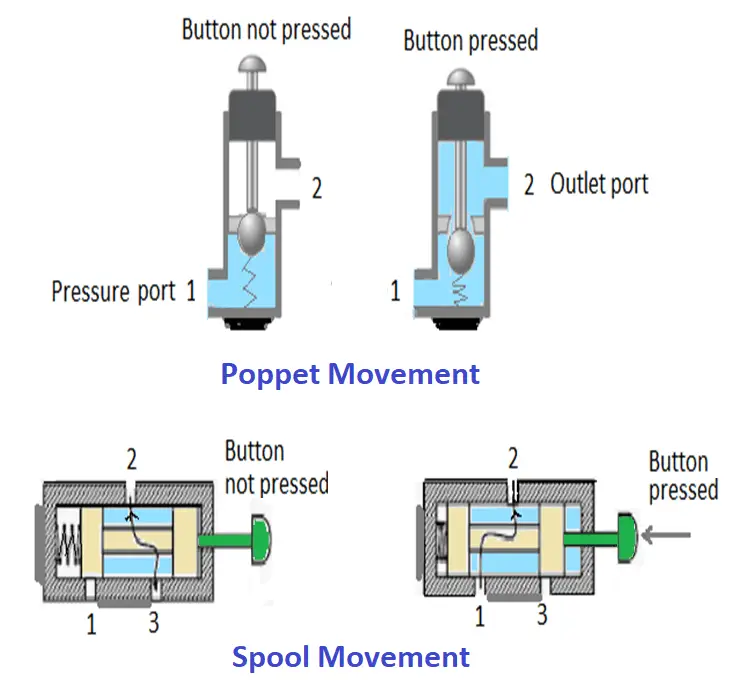
Based on Number of Ports
Two-way, three-way, four-way valves. Denoted in capital letters P (pump port), T (Tank port), A, B (supply ports), or numerals 1, 2, 3, 4 are shown on the boxes that indicate connections.
Based on a number of switching positions:
The square box represents position. The symbol of the directional control valve is made of a number of square boxes which are adjacent to each other depending on the number of positions. One, two, or three positions.
Based on Actuating Mechanism
The directional control valves are actuated by a variety of methods includes manual, mechanical, electrical, pneumatic, and hydraulic and as shown in the table below.
When the actuator has pressed the spool inside the directional control valve changes its position and controls the fluid flow.
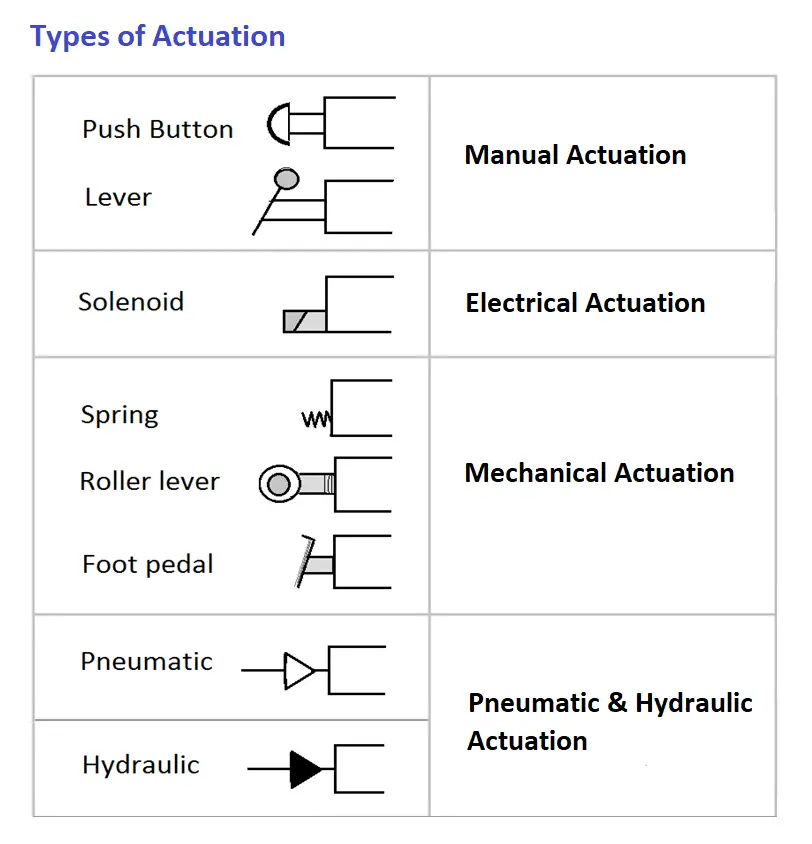
Various Types of Directional Control Valves
2/2 way valves are for ON/OFF function for fluid supply. It can be normally open or closed.
3/2 way valves are generally used to control single-acting actuators. It can be normally open or closed.
4/2, 4/3, 5/2, 5/3 way valves are normally used for double-acting actuators.

Example:
Find below a hydraulic circuit that describes how a directional control valve works. In a 4/2 directional control valve, 4 ports, 2 positions.
When the lever is pressed, the directional control valve changes its position and controls the fluid flow.
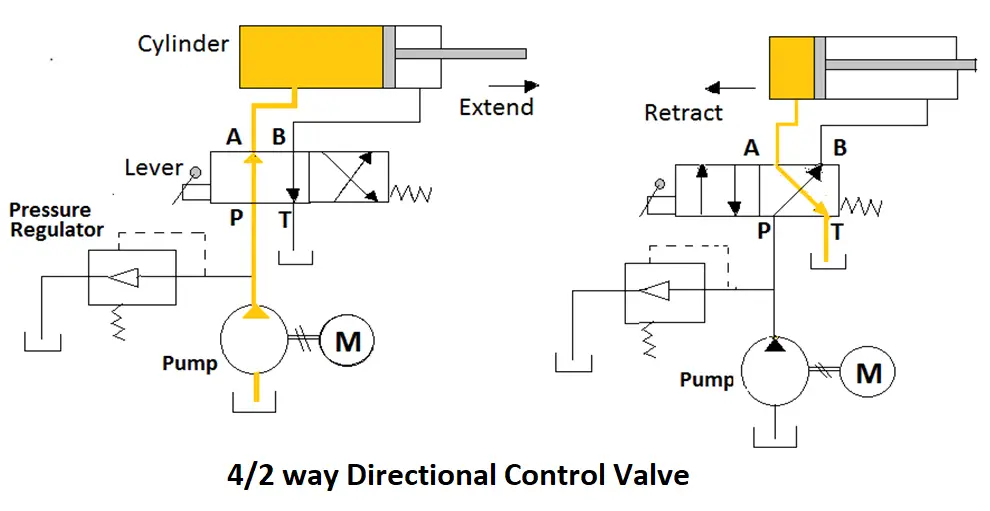
DCV and Fluid Pressure Control Valves
Directional control valves provide a flow path to the cylinder actuation and also a return path to the tank.
Fluid pressure is controlled to perform different functions like pressure relief, sequence valve, and counterbalance valve as discussed below.
Pressure Relief valve
Pressure relief valve is used to limit the pressure in the whole system called pressure relief valve, also Safety valve. It prevents system pressure from building up and causing damage to equipment or serious hazards.
Pressure relief valves are two types, direct operated and pilot operated. Pressure relief valves are normally closed-type valves.
The pressure relief valve is located between the pump and the direction control valve.
Sequence Valve
A sequence valve is used to ensure that a certain pressure level is attained in one branch line with the first consumer of the circuit.
Later supplied to the second consumer in a sequence manner.
Counterbalance valve
Counterbalance valve is used to avoid the uncontrolled speedy movement of the cylinder. It resists rapid changeover.
A counterbalance valve is used in earth-moving equipment. It holds the load for some time like lifting the trolley of the tractor or the trucks.
Reference: Hydraulic and Pneumatics A technician’s and Engineer’s guide by Andrew Parr.
If you liked this article, then please subscribe to our YouTube Channel for Instrumentation, Electrical, PLC, and SCADA video tutorials.
You can also follow us on Facebook and Twitter to receive daily updates.
Read Next:
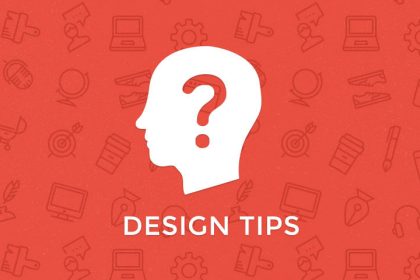

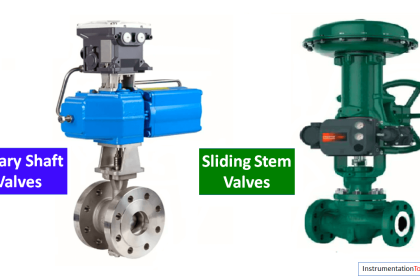
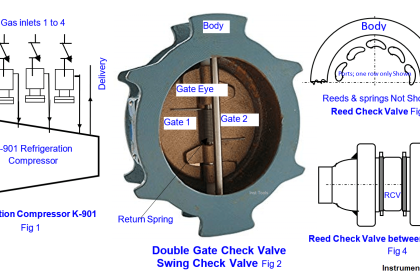
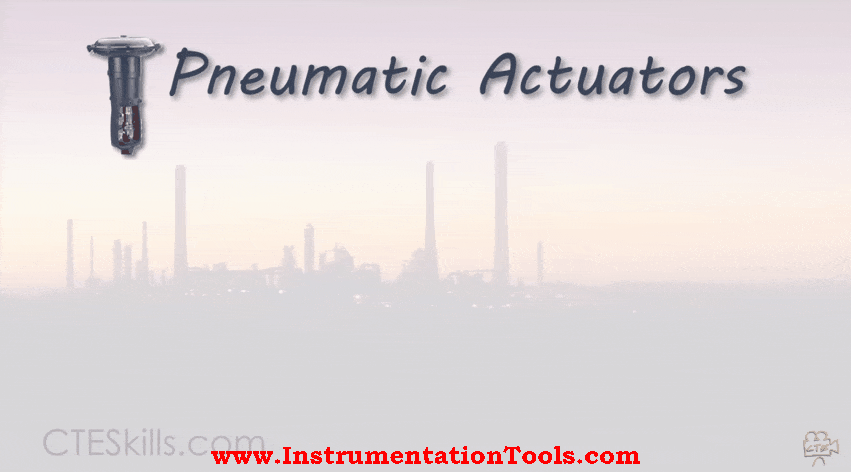

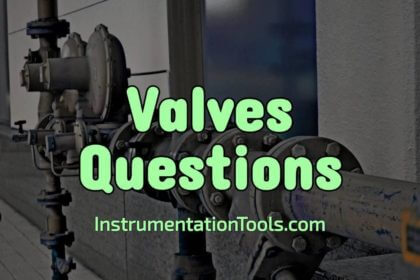



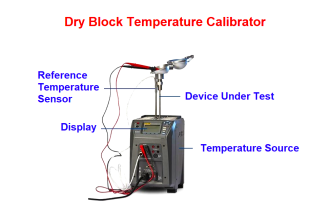

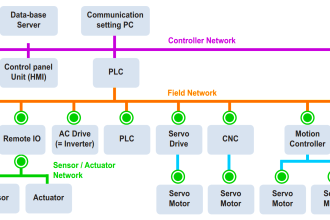
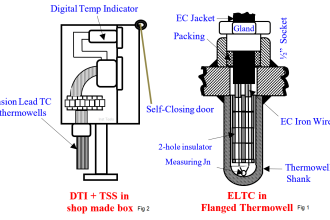
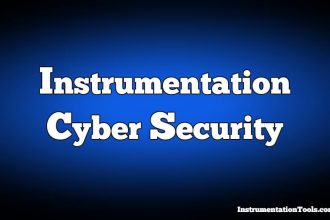


I’ve never seen one position valve, Do you have any example?